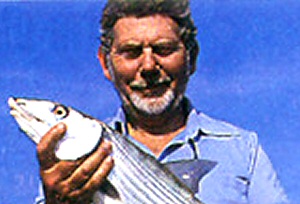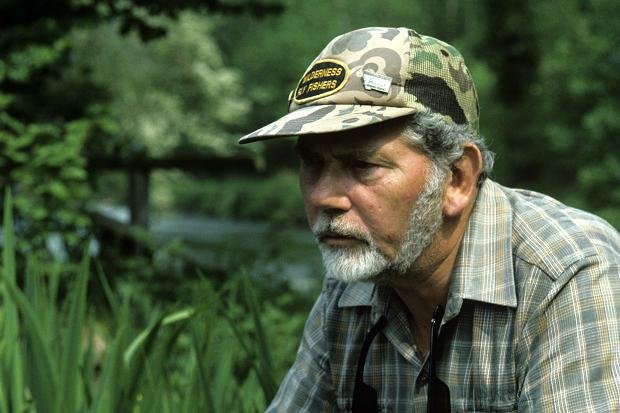Goddard's White Caddis (G & H Sedge) Fly
Some adult caddis have milky white wings and the Goddard's White deerhair Caddis fly pattern is a good imitation to use when they are hatching.

GODDARD'S CADDIS FLY PATTERNS. Hook size 10 12 14 16 18 - $US each - Great for rough water
On bright sunny days fishing on water that is reflecting the sunshine it can get difficult keeping track of your fly. Use a deer-hair buoyant White Goddard's Caddis. If the sun goes in try a more natural colored Goddard’s caddis to match the local hatch like this on. It is known as the G and H sedge dry fly fishing pattern in Britain named after the two men involved in the design of the fly Mr John Goddard and Mr Cliff Henry. The way the deer hair is cut imitates the swept back wings of the natural Caddis adult as it flies off the surface after it has hatched. In real life you see a V shaped wake appear behind the fly. This imitation also produces the same disturbance in the water surface that is like a big sign to the waiting trout that here there is food.

The above photo is of John Goddard, the fly fisherman who designed the G and H sedge fly pattern
If you are out fishing in the boats on big Stillwater during the summer, using a Bob or a top dropper fly can add to the success of your trout fly fishing trip. I find the best conditions, using this technique, is in the summer on a cloudy day when there is a warm wind blowing. This is when the trout rise in a column of water, looking for food. They will be up just under the waves looking for what they can pounce on. It is a most exciting and rewarding form of trout fishing.
You have to use a rod longer than you normally take fly fishing. Something between 10 to 12 feet, I find his ideal. You need the extra length to work and control the top dropper fly as far away from the boat as possible. Normally I would use of floating line but I've seen used and have used myself to great effect, a heavy fast sinking line when the wind is strong and there are big waves. With a rod held high, a lighter floating line would get blown all over the place in higher wind conditions. This does not happen when you use a heavy fast sinking line. This enables the important top dropper fly to be controlled with great accuracy. Be prepared and you go on to large lakes and reservoirs, for conditions to change during the day. On calm days use the lighter floating line, but if the weather becomes more choppier. You need to change your online the heavier fast sinking line to maintain control of your fly.

This is fly fisherman John Goddard designer of the Goddard's Caddis (G and H Sedge)
So why does using a top dropper fly catch fish? To the subsurface trout. The main attraction is the way it creates a disturbance on the water surface. It catches the fish's eye. He notices the movement which suggest to him the possible presence of food caught in the water surface film. When the fly skitters on top of and through the waves, the silhouette it creates can be seen by trout several feet below. This disturbance gets their natural curiosity turned on. They have to go and investigate. They swim up towards the fly and follow it to see if it is worth eating. Quite often it is at this point that the hungry trout will notice the other artificial fishing flies trailing below the top dropper. As these are normally a more imitative pattern of aquatic insect food that the trout regularly eats, many take a bite and are hooked on the bottom or middle dropper fly. Thus the use of a good top dropper fishing fly worked correctly on the surface gets lurking trout to come up from deeper water to the vicinity of the other dropper flies. The bigger hungry trout seemed to go after top dropper fly as it appears to the fish that this fly offers a more substantial meal.
CUSTOMER'S COMMENT
I use your Goddard’s Caddis because it is buoyant and the right shape that is perfect for imitating an adult caddis on the water surface. I have used it as a top dropper or singly on a long leader, cast to lie inert in the path of moving trout or retrieved quickly on a windy day and heavy ripple. - Tim Williamson


Goddard's fishing books

